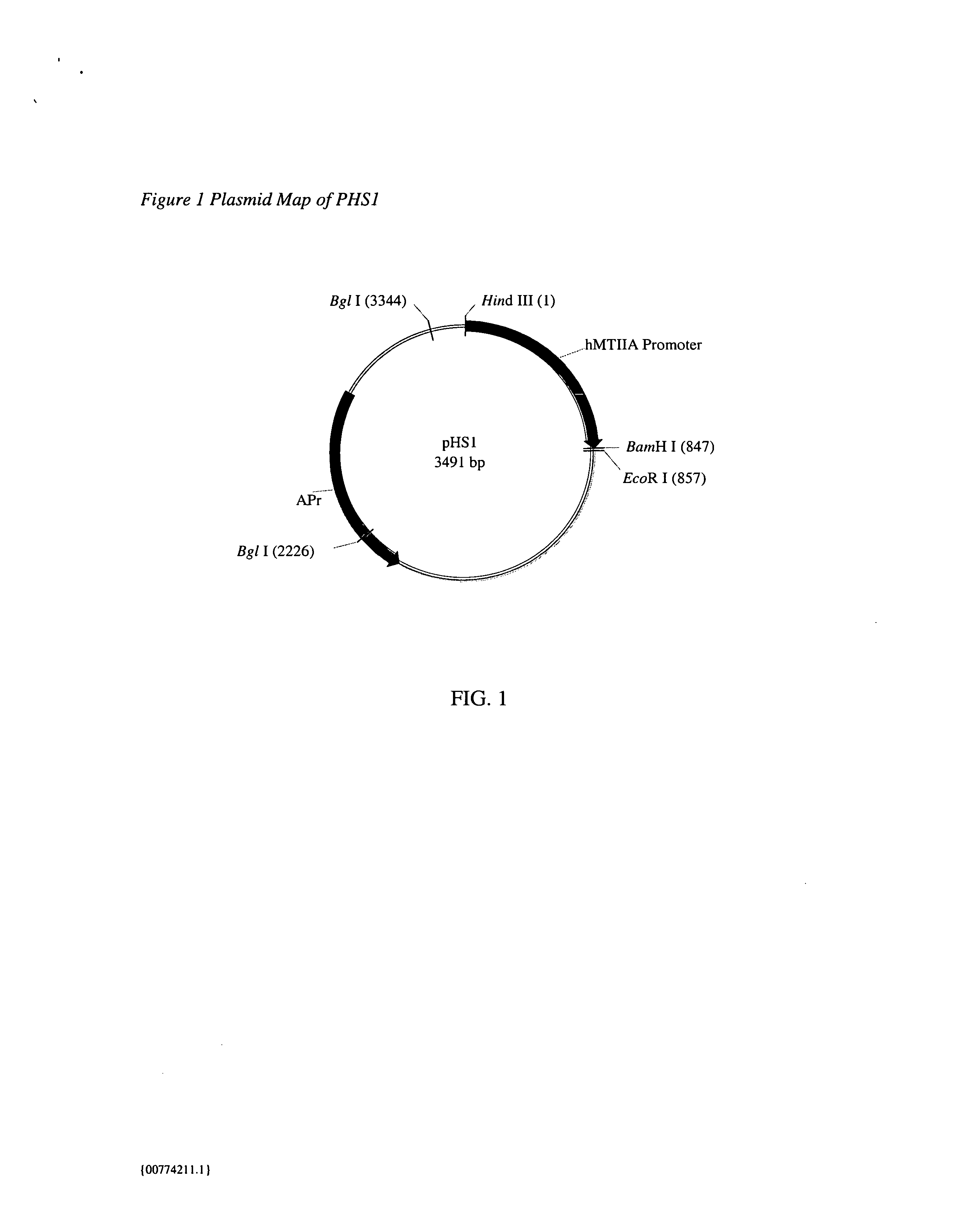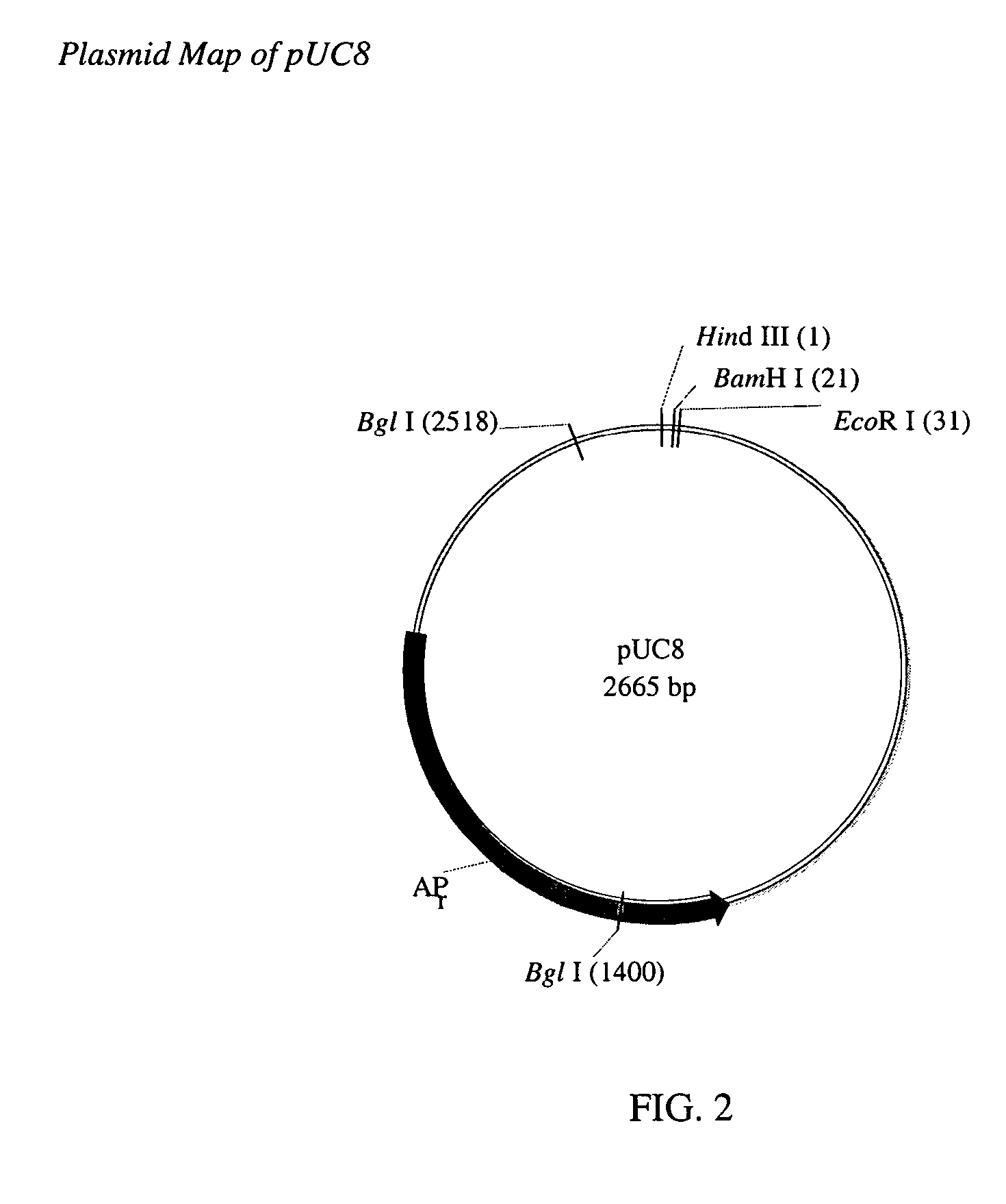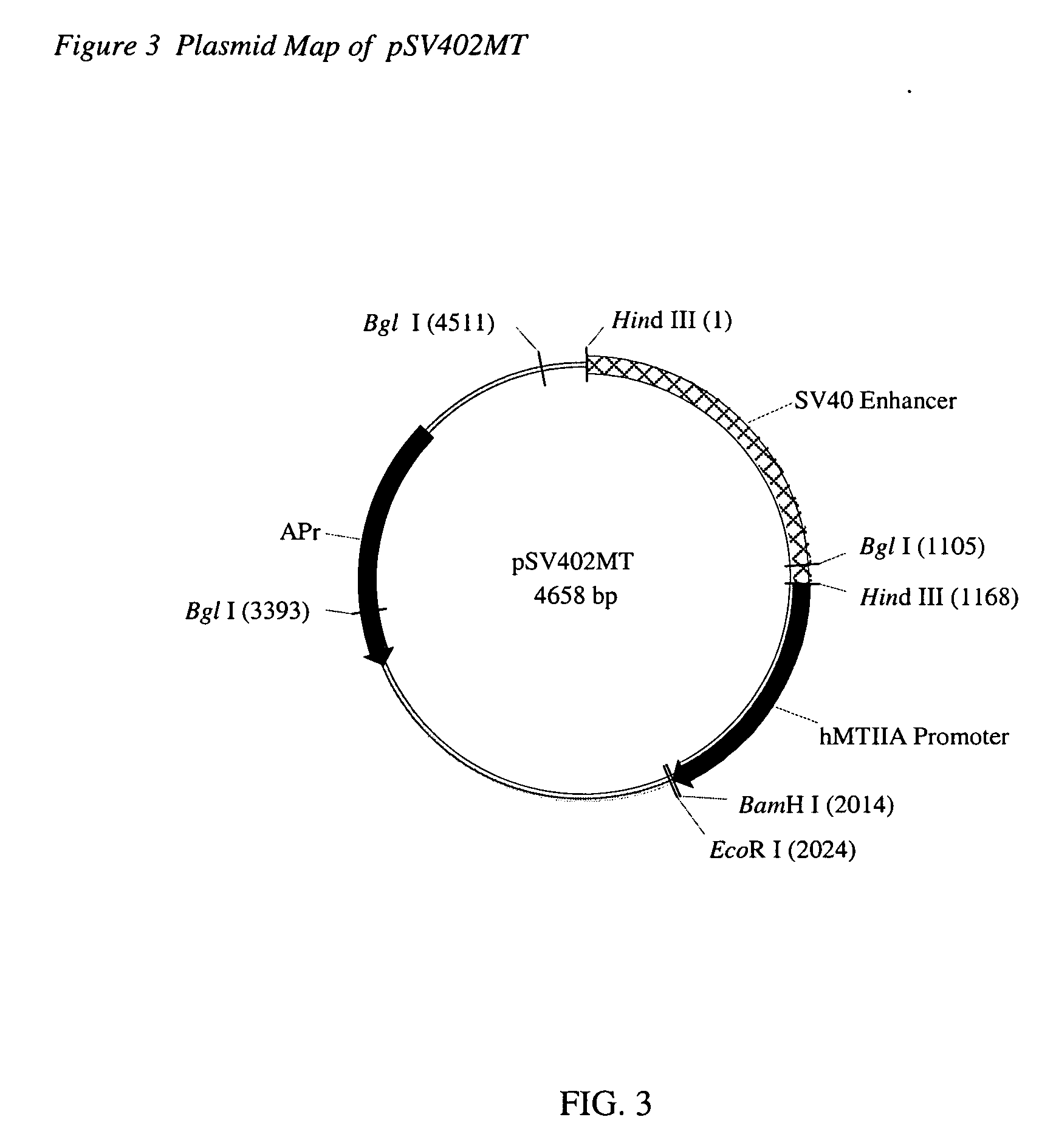Cell lines for expressing enzyme useful in the preparation of amidated products
a cell line and enzyme technology, applied in the field of recombinant expression vectors and cell lines, can solve the problems of high cost-prohibitive for large-scale production applications, post-translational processing must often be accomplished using complex in vitro chemical procedures, etc., and achieve good expression yield and survival rate. good
- Summary
- Abstract
- Description
- Claims
- Application Information
AI Technical Summary
Benefits of technology
Problems solved by technology
Method used
Image
Examples
example 1
Conversion of Glycine-Extended Parathyroid Hormone Fragment to Amidated Counterpart Using Peptidylglycine α-amidating Monooxygenase
Amidation of rhPTH(1-34)Gly35-OH Using Pyruvate
[0152] The components and final concentrations used for amidation of rhPTH(1-34)Gly35-OH are shown in the Table 12. A brief description of the amidation follows.
TABLE 12α-Amidation of rhPTH(1-34)Gly35-OHReagentFinal ConcentrationrhPTH(1-34)Gly35-OH2 mg / mL250 mM MES pH 6.330 mM3 mM Cupric Sulfate0.5 μM100 mM Sodium Ascorbate2 mMOxygenThe dissolved oxygen concentrationis maintained at or near saturation.400 mM Sodium Pyruvate8 mM250 mM Potassium Iodide5 mM190 Proof Ethanol1%PAM30,000 U / mL
Approximately 12.4 grams of rhPTH(1-34)Gly35-OH in 1,900 mL of 25 mM MES, 200 mM NaCl pH 6.0 was charged into a glass vessel fitted with an agitator and gas sparger.
To this solution, the following components were added in the order listed: 3,025 mL water, 741 mL 250 mM MES pH 6.3, 1.03 mL 3 mM cupric sulfate, 124 mL pota...
example 2
Post-Amidation Purification
Cation Exchange (CEX) Chromatography
[0156] Purification of rhPTH(1-34)-NH2 from residual rhPTH(1-34)Gly35-OH was achieved using CEX chromatography. A brief description of the CEX chromatography method is described below. The acidified amidation output was loaded onto a Toyopearl SP650M (Tosoh Bioscience LLC) column, 9 cm×19 cm, equilibrated with 25 mM MES pH 6.5. The column was operated at 180 cm / hr and the UV absorbance of the column effluent was monitored at 280 nm. The column was washed with 25 mM MES pH 6.5 until the pH of the column effluent pH returned to 6.5. The column was washed with 25 mM MES, 80 mM NaCl pH 6.5 until the wash peak completely eluted and a stable UV baseline was achieved. The product, rhPTH(1-34)-NH2, was eluted from the column with 25 mM MES, 200 mM NaCl pH 6.5. The entire UV peak was collected; fractions were screened by RP-HPLC to determine pooling criteria.
Reversed-Phase (RP) Chromatography
[0157] RP chromatography was uti...
PUM
| Property | Measurement | Unit |
|---|---|---|
| Volume | aaaaa | aaaaa |
| Volume | aaaaa | aaaaa |
| Volume | aaaaa | aaaaa |
Abstract
Description
Claims
Application Information
 Login to View More
Login to View More - R&D
- Intellectual Property
- Life Sciences
- Materials
- Tech Scout
- Unparalleled Data Quality
- Higher Quality Content
- 60% Fewer Hallucinations
Browse by: Latest US Patents, China's latest patents, Technical Efficacy Thesaurus, Application Domain, Technology Topic, Popular Technical Reports.
© 2025 PatSnap. All rights reserved.Legal|Privacy policy|Modern Slavery Act Transparency Statement|Sitemap|About US| Contact US: help@patsnap.com



